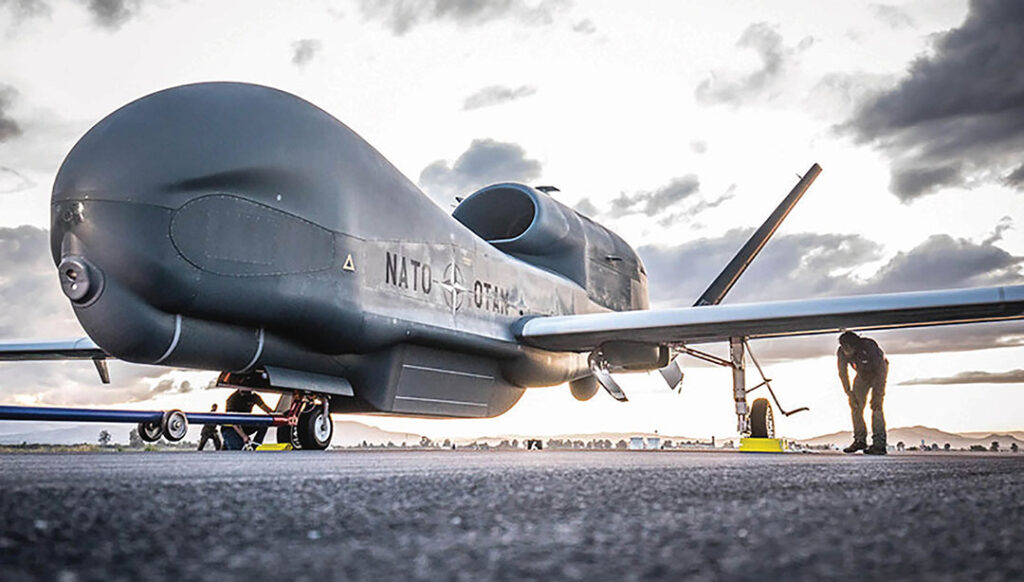Reuters
A cooperative NATO defense project that gives the alliance a state-of-the-art ground surveillance system gained steam in December 2019 with the delivery of the second of five unmanned aircraft to an air base in Italy.
The U.S.-made RQ-4 Global Hawk unmanned aircraft delivered to Sigonella, Italy, is part of a U.S. $1.5 billion surveillance system the alliance hopes to have operational in 2022. NATO says the surveillance system will be the world’s most advanced and will give the alliance 24-hour, near-real time surveillance of land and sea and provide greater visibility than satellites.
“We are basically creating a small air force,” Brig. Gen. Volker Samanns, a senior manager at the NATO program, said. The aircraft can fly for up to 30 hours at high altitude in all weather, seeing through clouds and storms to produce detailed maps, photos and data.
Fifteen NATO allies funded the acquisition of the Northrop Grumman aircraft, including Germany, Italy, Poland and the United States, as well as ground stations built by Airbus. All 29 allies will have access to the intelligence generated, which could include missile sites in Russia, militant activity in the Middle East or pirates off the coast of Africa.
The aircraft will be piloted remotely from Italy and will fly within NATO airspace. It could be flown more widely in a conflict, however. Unmanned or remotely piloted aircraft are increasingly a feature in modern warfare because of their long flying times and intelligence-gathering capabilities.
The delivery of the aircraft underpins Western efforts to remain more technologically advanced than Russia and China, officials said. Brig. Gen. Phillip Stewart, a former Global Hawk commander in the United States, said he did not believe Moscow and Beijing had the sophistication of the NATO system.

